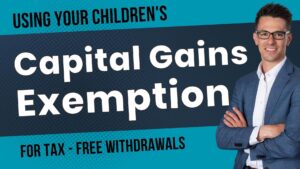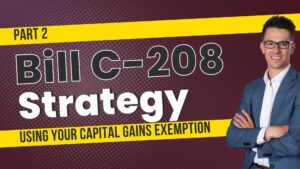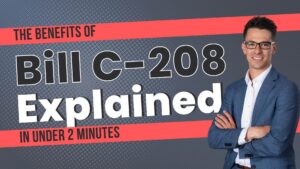Many business owners and incorporated professionals use tax loss harvesting to manage their capital gains. However, when triggering losses in a corporate investment account, there is an important step you do not want to miss. Failing to check your Capital Dividend Account (CDA) balance first could cost you the ability to withdraw money from your corporation tax-free.
Here is what you need to know before taking action.
Prefer to watch the video?
Understanding Tax Loss Harvesting in a Corporate Account
At year-end, many investors look to trigger losses in their investment accounts to offset capital gains. This strategy, known as tax loss harvesting, is common in both personal and corporate investment accounts.
When used properly, it can help manage taxable gains and improve after-tax returns. However, there is a key difference when doing this inside a corporation.
How the Capital Dividend Account (CDA) Works
Corporations can accumulate a tax-free withdrawal balance through their Capital Dividend Account (CDA). This account tracks the non-taxable portion of capital gains that a corporation has realized. When there is a positive CDA balance, you can pay out that amount to shareholders tax-free.
Triggering a capital loss in your corporation reduces your CDA balance. If the loss is large enough, it can even eliminate the balance entirely, which removes your ability to make a tax-free withdrawal.
The Right Sequence Matters
Before you trigger any losses in your corporate investment account, check your CDA balance first.
If you have a positive CDA balance, pay out your tax-free capital dividend first. Once that payment is complete, you can proceed with triggering the loss.
Skipping this step can reduce or eliminate tax-free dollars you would otherwise have been able to access.
A Common Oversight
Not all investment advisors understand the nuances of the CDA. Many will trade in corporate accounts to trigger tax losses without considering the impact on the CDA. This can result in missed tax planning opportunities.
If you work with multiple professionals, be sure to coordinate between your accountant, investment advisor, and financial planner to ensure the right sequence of transactions.
Final Thoughts
Triggering losses can be a smart tax strategy, but in a corporate account, you need to take the right steps.
Before taking action this year, check your CDA balance. If there is an opportunity to pay yourself a tax-free capital dividend, do that first.
For guidance on this and other tax-efficient strategies for incorporated professionals, visit our website and book an appointment with us.







